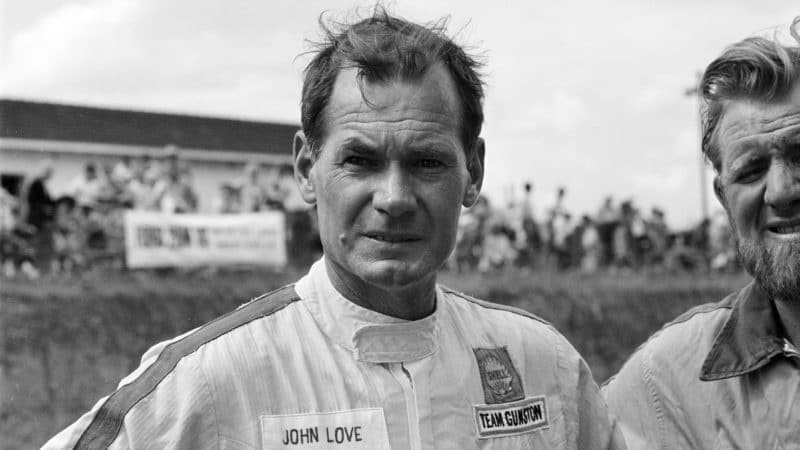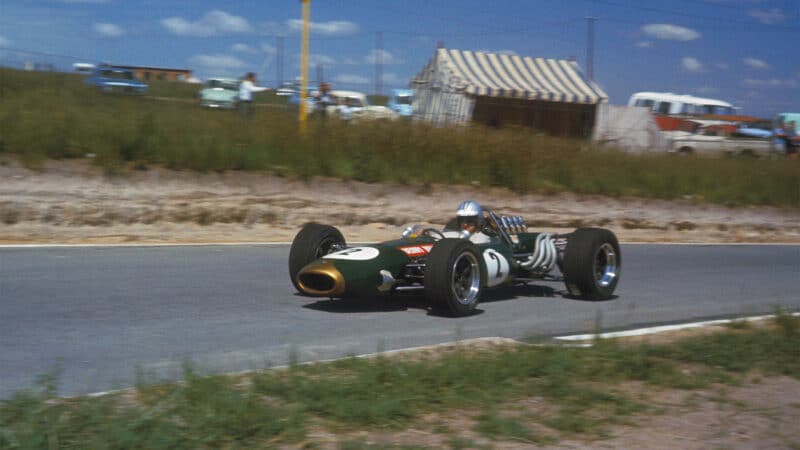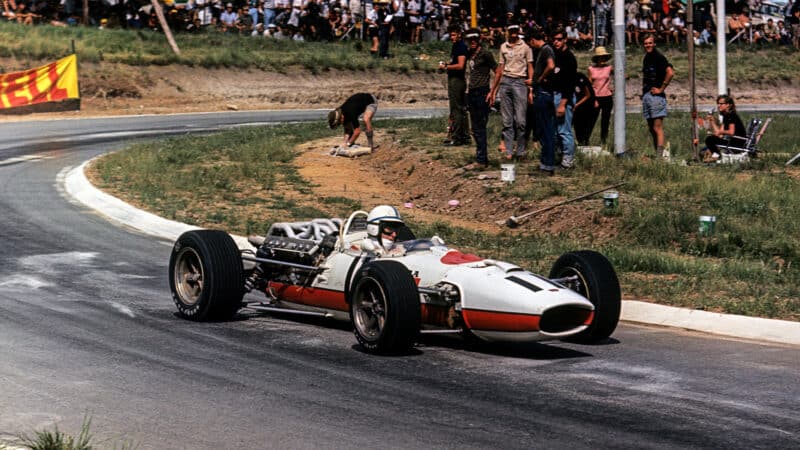At the start the Brabhams duly blasted off and by a quarter distance the odds of Pedro Rodriguez winning must have looked in the realm of fantasy. Stuck down in fifth place with not only a down on power engine, but also gear selection issues, it was beginning to look like a long afternoon. But this was always going to turn into a war of attrition, and soon, many drivers would have paid good money for problems as comparatively trivial as Pedro’s.
First, Jim Clark retired with an overheating H-16 (Stewart’s having already blown up on lap two), then Bonnier’s Cooper broke its Maserati engine. Mike Spence brought in his BRM with smoke pouring from its H-16 then Brabham’s Repco started to misfire so badly he dropped from the lead to out of the reckoning altogether. Next to break was Siffert’s Cooper-Maserati motor, then Gurney was sidelined with suspension failure, the only retirement through mechanical malady not related to an engine. Many less brave than John Surtees would have retired his Honda, suffering as it was from tyre issues and pedals so hot they blistered Big John’s feet.
But at the front, nothing appeared able to stop the serene progress of Denny Hulme’s Brabham. Until, that is, he came slithering into the pits at three-quarter’s distance to tell his crew his brake pedal was on the floor. A lap later he was back for brake fluid and by the time he’d made a third stop he was two laps off the lead and out of contention.
And who was holding that lead? None other than John Love, in a two-year-old Tasman car with an undersized 2.7-litre four-cylinder Climax engine. What’s more, although his engine was suffering too, he was sufficiently far ahead for the race to be in the bag. He held that lead until just six laps remained, 10 minutes of a race of more two hours. Had he won, it would have been one of the greatest acts of giant-slaying ever seen in Grand Prix racing: at that time Love had competed in just three world championship grands prix, all in South Africa, yet at 42 was the older than all others entered save fellow countryman Sam Tingle. To say the crowd was somewhat enthused is putting it mildly.

A seasoned veteran: John Love was a beloved hometown favourite
DPPI
But the misfire was to deny him, not because he couldn’t maintain the pace, but because it used too much fuel. To gasps from the crowd, Love had no choice but to pit for two gallons of petrol, losing enough time to put the presumably astonished Rodriguez into the lead he’d hold until the end. Love came home second, both Coopers having lapped the remaining field of, count ‘em, four other classified finishers.
So this was Kyalami’s first race, Pedro’s first win at the top level and what would have been but for two gallons of gas the location of one of racing’s least likely wins. But there’s more to this race even than that.
Though no one knew it, this would also be the last time a Cooper won in F1 and the last win by a car powered by a Maserati engine, too. These two proud names, both with multiple world championships in their own right would limp on through ’67 and ’68 before a final whimper at Monaco in ’69 when Vic Elford driving Colin Crabbe’s T86B qualified and finished last, almost unnoticed as he was lapped six times by Graham Hill as he scored his fifth and final win in the Principality.




